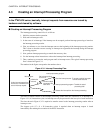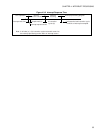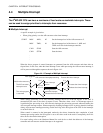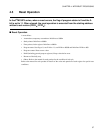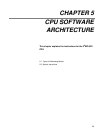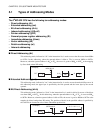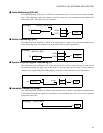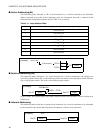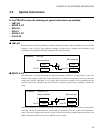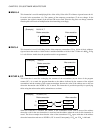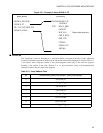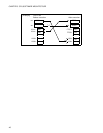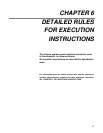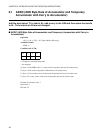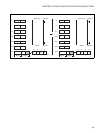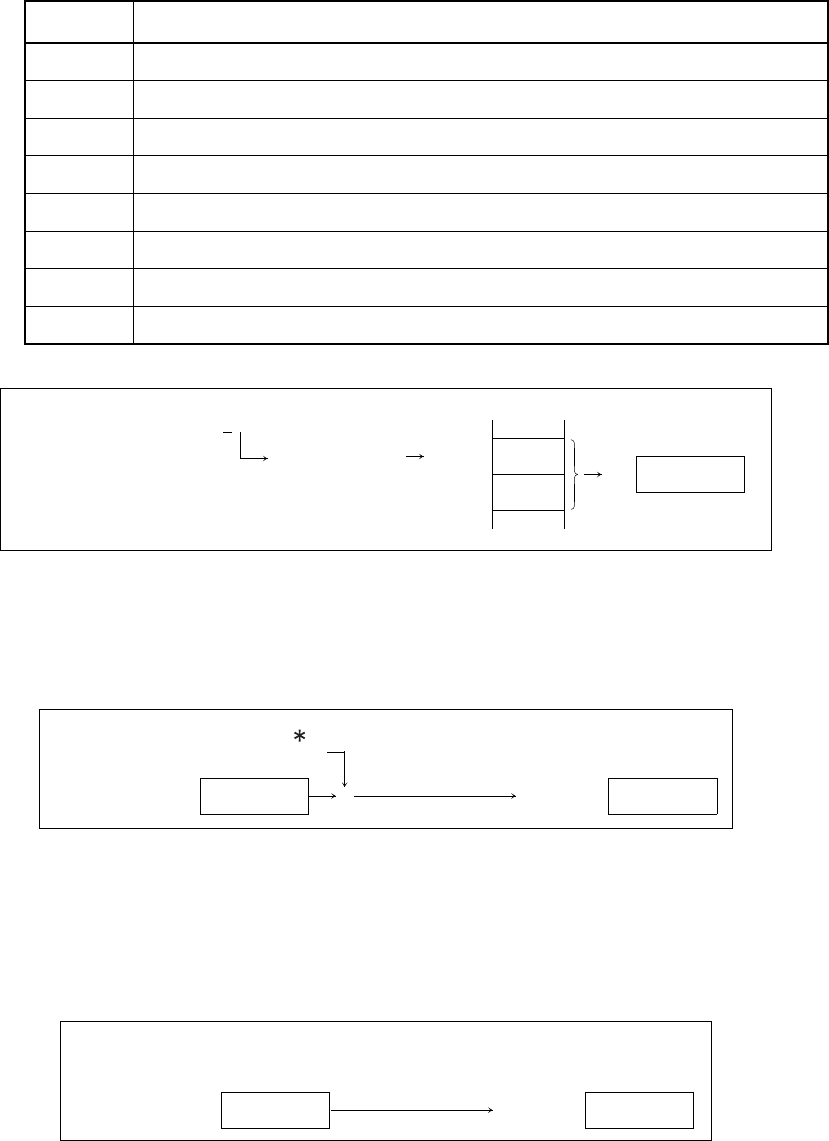
42
CHAPTER 5 CPU SOFTWARE ARCHITECTURE
■ Vector Addressing (#k)
This addressing mode, indicated as "#k" in the instruction list, is used for branching to the subroutine
address registered in the table. In this addressing mode, the information about #k is contained in the
instruction code and the table addresses listed in Table 5.1-1 are created.
■ Relative Addressing (rel)
This addressing mode, indicated as "rel" in the instruction list, is used for branching to the 128-byte area
across the program counter (PC). In this addressing mode, the contents of the operand are added with their
sign, to the program counter. The result is stored in the program counter.
In this example, the program jumps to the address where the instruction code BNE is stored, resulting in an
infinite loop.
■ Inherent Addressing
This addressing mode, which has no operand in the instruction list, is used for operations to be determined
by the instruction code. In this addressing mode, the operation varies for every instruction.
Table 5.1-1 Jump Address Table
#k Address table (upper jump address: lower jump address)
0 FFC0
H
:FFC1
H
1 FFC2
H
:FFC3
H
2 FFC4
H
:FFC5
H
3 FFC6
H
:FFC7
H
4 FFC8
H
:FFC9
H
5FFCA
H
:FFCB
H
6FFCC
H
:FFCD
H
7 FFCE
H
:FFCF
H
(Conversion)
[Example]
CALLV #5
FFCA
H
FFCBH
FEH
DCH
FEDCH
PC
{
Old PC
New PC
[Example]
BNE +FEH
9ABC
H
9ABCH + FFFEH
9ABAH
Old PC
New PC
[Example]
NOP
9ABC
H
9ABDH



